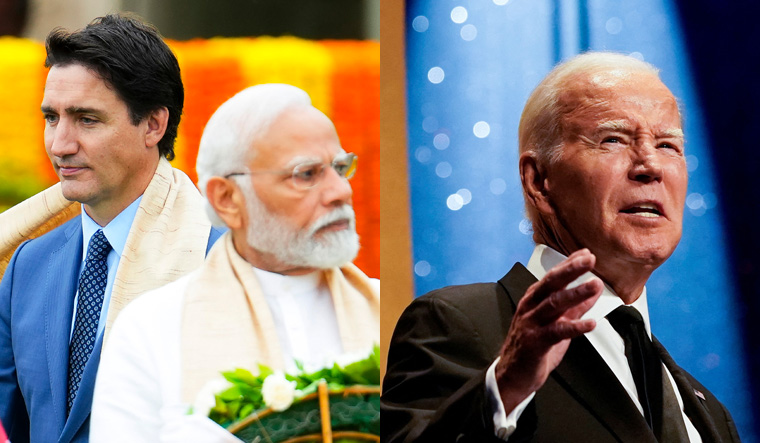The recent confirmation by a top United States diplomat on Canada receiving intelligence, behind Nijjar’s killing, from the Five Eyes partners has sparked a controversy intensifying the India-Canada tensions. This all began after Canadian Prime Minister Justin Trudeau alleged India's involvement in the killing of Khalistani separatist Hardeep Singh Nijjar. India had termed the allegations as 'absurd and baseless' and as a tit-for-tat move it had expelled a senior Canadian diplomat after Ottawa’s expulsion of an Indian official.
Since the US envoy’s remarks, the Five Eyes intelligence alliance has gained the spotlight and questions on its role were raised.
What is Five Eyes intelligence alliance?
Five Eyes Intelligence Oversight and Review Council (FIORC) is an intelligence alliance consisting of nations involving United States, United Kingdom, Australia, Canada and New Zealand. It comes under the US Government's counterintelligence and security activities. The representatives of these five nations, known as Council Members, has signed an agreement on CI and other security aspects.
The agreement under the FIORC covers the relations of the Council Members of the five nations in intelligence oversight, review, and security matters.
At least one meeting in person is held by the Council annually. The executive secretariat has its office situated in United States.
Role of Five Eyes
The Council is established with the purpose of creating a forum where Council Members exchange views on subjects of mutual interest and concern, compare best practices in review and oversight methodology, explore areas where cooperation on reviews and the sharing of results is permitted where appropriate. It is also tasked to encourage transparency to the largest extent possible to enhance public trust; and maintain contact with political offices, oversight and review committees, and non-Five Eyes countries as appropriate.
The Five Eyes countries cooperate operationally abiding each country’s variation of law on security of information. The guidelines under the FIORC states that the Council Members commit to facilitating information sharing and collaboration between the selves to advance the stated purposes...within the respective limits imposed by law, executive or ministerial direction, or other binding authority.
“It is recognised and agreed by the Council Members that the extent of information that may be shared between Council Members may be defined by or dependent upon the extent of agreements between Five Eyes intelligence agencies,” it stated.
In an exclusive interview with CTV, US Ambassador to Canada David Cohen revealed that Canada received intelligence from Five Eyes relating to the killing of Nijjar, who is labelled as a Khalistani terrorist by India. Nijjar is alleged to have imparted arms training to youngesters and also accused of reviving groups including BKC.
There was shared intelligence among Five Eyes partners that helped lead Canada to make the statements that the Prime Minister made, Cohen was quoted by CTV.
Though Cohen did not comment on whether it was either human or surveillance based intelligence, he confirmed that there was shared intelligence that made PM allege India’s role in it. There were also reports that additional information on the intelligence was provided by an unspecified member of the intelligence-sharing alliance.
Trudeau’s allegation against India came after the killing of Singh, a Canadian citizen in Surrey in British Columbia on June 18. As the India-Canada tensions widens, the ban on visas, the future PR status of Indians settled in Canada among others has become a matter of concern for the people.
US had earlier said that they are deeply concerned about the allegations raised by Trudeau against India.



